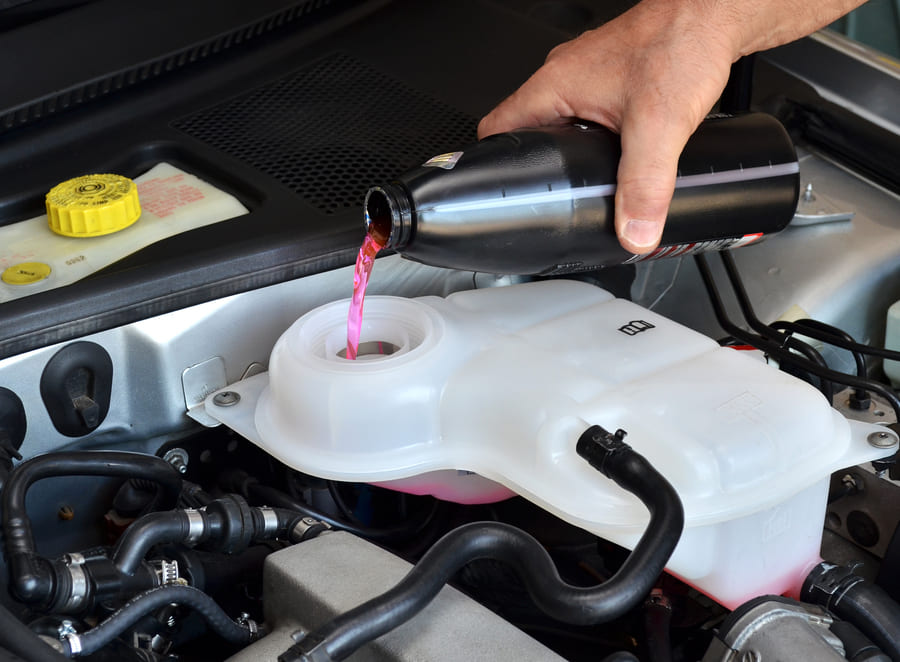
Car coolant is an essential fluid used to regulate the temperature of the engine and car components, while preventing damage and corrosion caused by overheating or freezing temperatures. It consists of antifreeze, water and special additives. Without the coolant, the engine components would melt and the vehicle could be seriously damaged. However, it not only stops the engine from overheating but helps it to reach and maintain its optimal operating temperature.
The engine’s cooling system works by pumping the liquid coolant around the engine, through the pipes and passages. The coolant absorbs the excess heat as it passes through the engine and continues to the car’s radiator. It is then cooled down by the cold air flow generated by the cooling fan. The engine thermostat and coolant temperature sensors are also key components of the engine regulation system.
What’s the difference between car coolant and antifreeze?
People often assume that coolant and antifreeze are the same thing, however, antifreeze is only one of the components of coolant fluid. Coolant refers to the compound of water and antifreeze with a common mixing ratio of 50:50. Antifreeze lowers the freezing point of the engine while raising the boiling point of the coolant. It is a glycol-based liquid, usually made from ethylene glycol or propylene. Before the antifreeze is diluted it does not have the properties required for transferring heat, however, if too much water is used, the coolant will boil too easily. Using too much antifreeze could damage the water pump.
Types of antifreeze

In addition to the mixing ratio, it is also important to use the right type of antifreeze, as using the wrong one can lead to corrosion, blockages and radiator failure. Different cars have different engine specifications and therefore require different types of antifreeze. It is advisable to use the antifreeze recommended by the vehicle manufacturer.
3 types of antifreeze:Changing the coolant & checking the cooling system
Although some coolant mixtures are more long lasting than others, all coolants deteriorate eventually and become less effective at absorbing heat and preventing corrosion. If the engine starts to overheat, it could be a sign that your engine coolant needs changing. To do this, you will need to flush the radiator and cooling system first.
You can do this yourself by following these simple steps:- Step 1: Raise the vehicle and prop it up using jack stands. Make sure that the engine is cold and put on protective gloves and other safety gear before proceeding. Keep children and pets away from the work space. Antifreeze is very toxic to humans and animals.
- Step 2: Place a large container beneath the cooling system and detach the drain pipe or lowest pipe of the cooling system. Drain the coolant.

- Step 3: Check the pipes and radiator for dirt and limescale.
- Step 4: Reattach and secure the pipe.
- Step 5: Start the engine. Let it idle for 10–15 minutes.
- Step 6: Shut off the engine and leave it to cool down for 1–1.5 hours. Then detach the pipe again and drain the distilled water. If the water is dirty, repeat the process. Make sure to drain the water completely after flushing the system.
After that, you can fill up the reservoir with the new antifreeze according to the instructions. The coolant level should be between the minimum and maximum lines.
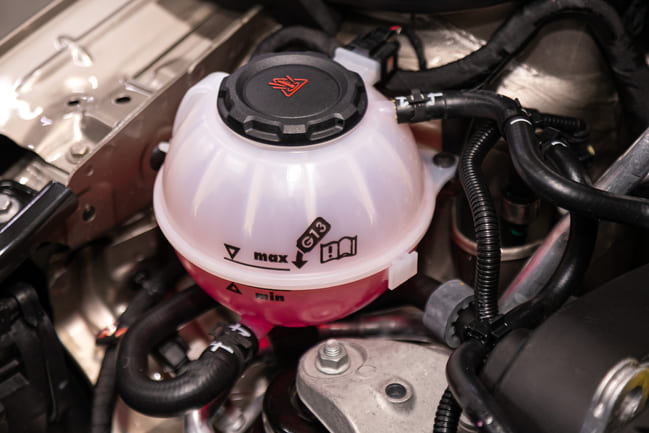
How to detect a coolant leak
Coolant leaks can be easy and inexpensive to repair so long as they are detected quickly. If left they can negatively affect the engine’s performance and cause serious long-term damage. They are often caused by faulty parts, such as a blown cylinder head gasket, a broken water pump, or a damaged expansion tank. Checking the cooling system and maintaining coolant levels is just one of several ways of extending the lifespan of the engine.
Symptoms of a coolant leak include:
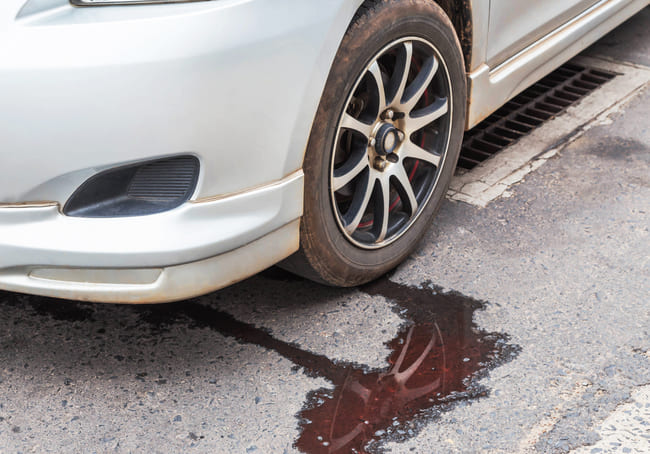

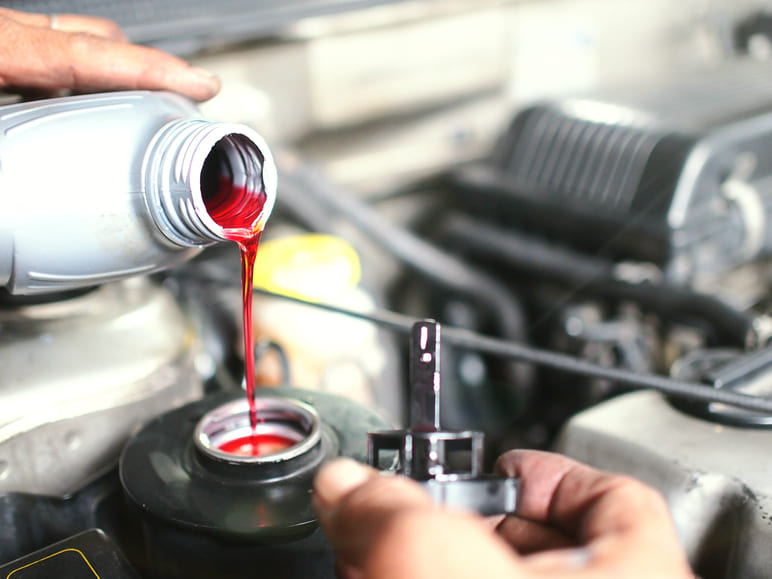


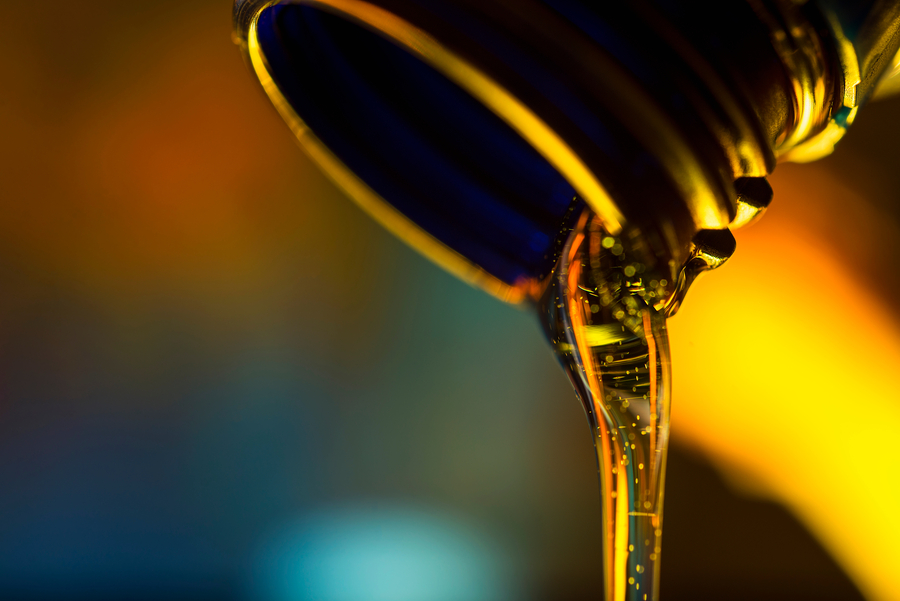
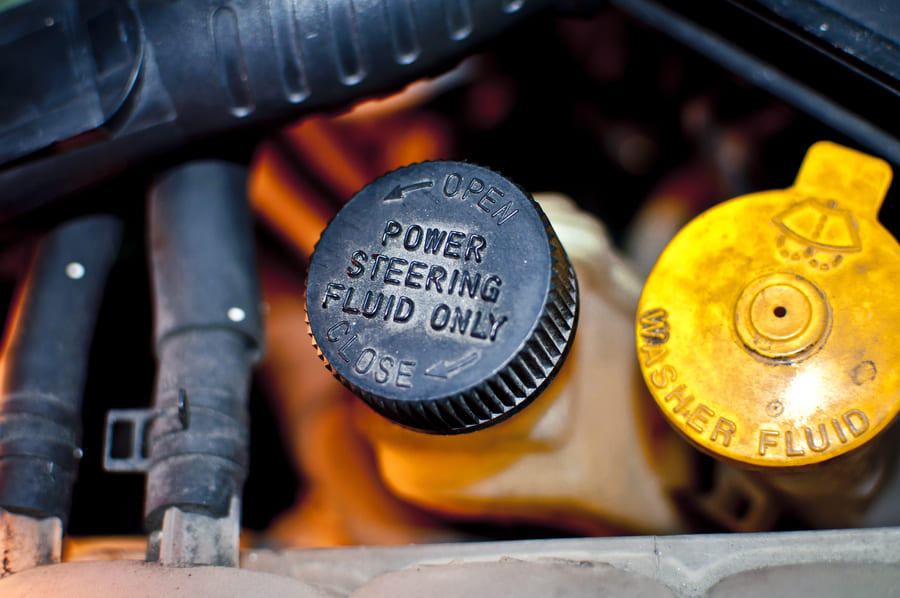

Comment